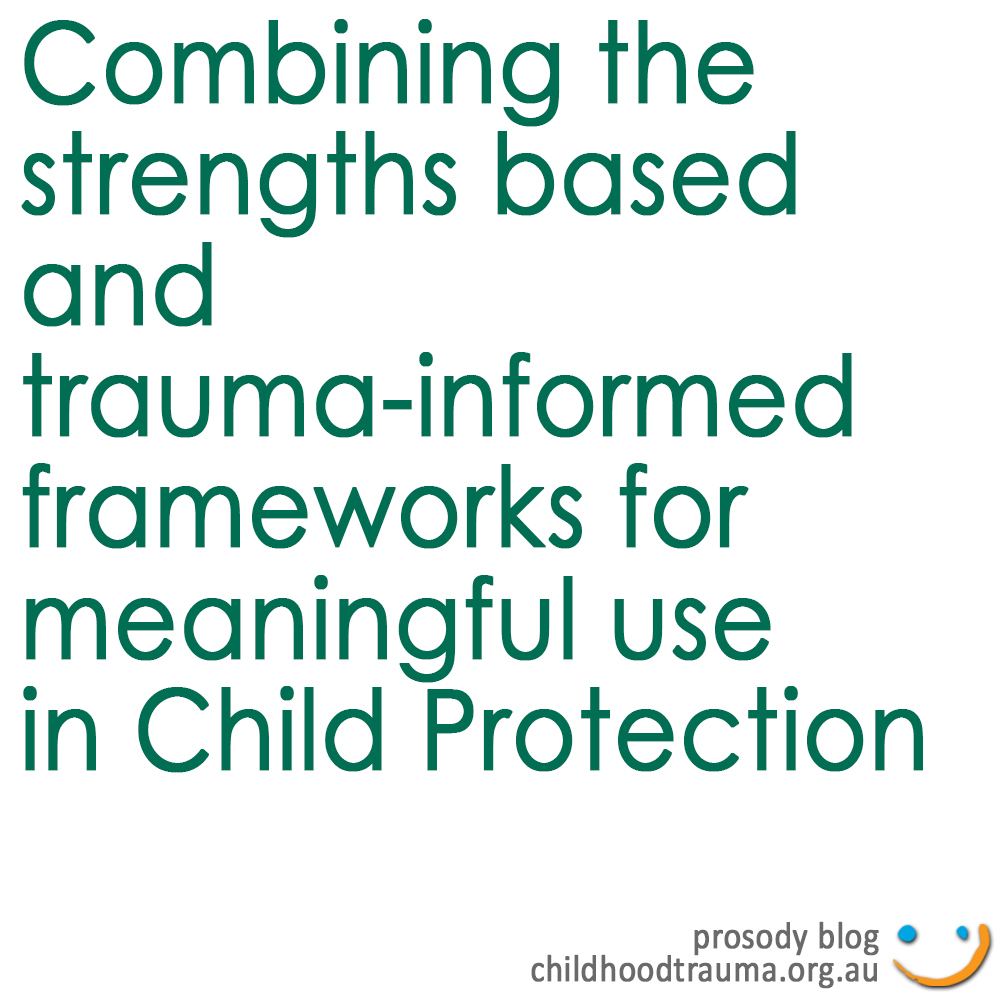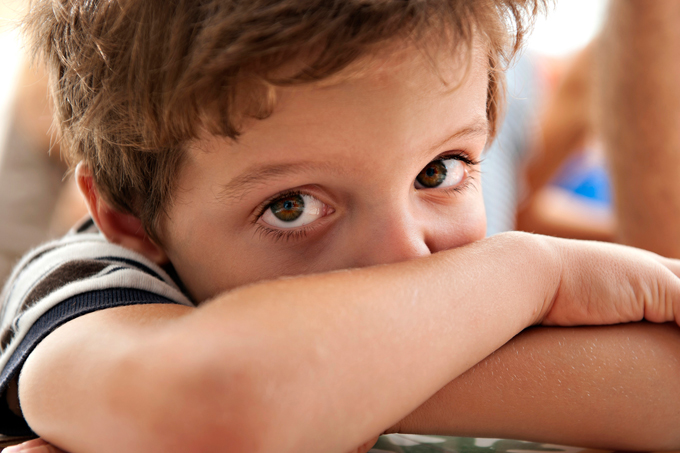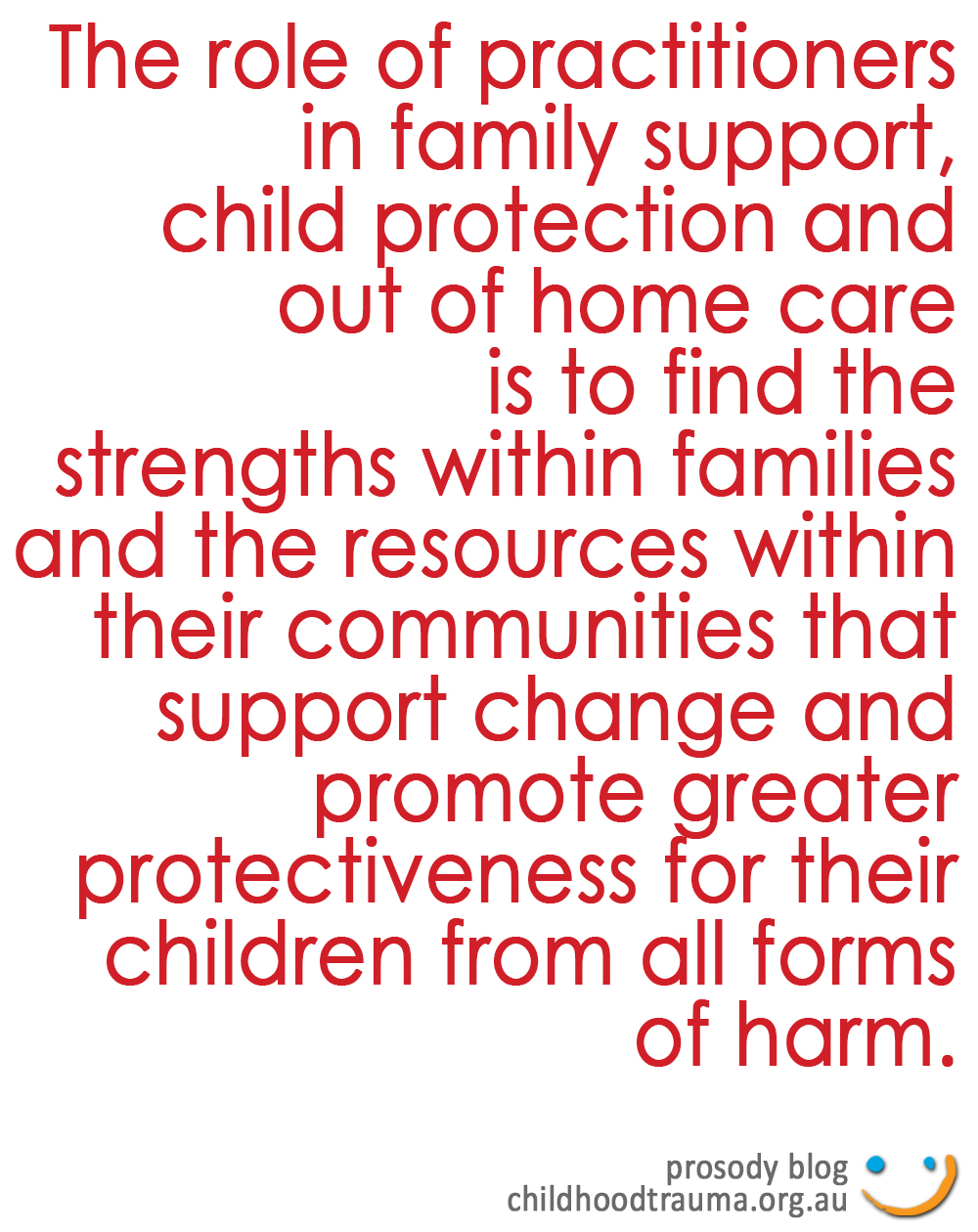
A New Integration
This article was co-authored by Joe Tucci & Janise Mitchell,
CEO and Deputy CEO of the Australian Childhood Foundation.
In our work around the country, we have noticed that strengths based approaches have now settled as core elements of contemporary child protection practice. At the same time, trauma informed frameworks have also become influential in helping to guide the decision making of child protection workers as they prepare action plans to meet the needs of traumatised children and young people.
 However, we are also noticing that there is yet to be a meaningful integration of these two frameworks for workers – despite the need to do so. In this article, we have attempted to begin the process of conceptual synthesis as a way of exploring how these two perspectives might offer innovation to the practice of child protection workers and the outcomes they can achieve.
However, we are also noticing that there is yet to be a meaningful integration of these two frameworks for workers – despite the need to do so. In this article, we have attempted to begin the process of conceptual synthesis as a way of exploring how these two perspectives might offer innovation to the practice of child protection workers and the outcomes they can achieve.
Strength based approaches adopt the following principles. As with most principles, how much practitioners really integrate them into their work determines how effective they are in supporting change to occur.
- The relationship between a worker and the child/young person and their family is what really counts in the change process.
- All individuals have the potential for change.
- Being honest and transparent with children/young people and their families will promote the relationship with practitioners.
- Change occurs in a sustained way when people’s own internal capacities and strengths are harnessed and mobilised by their motivation to live in ways that are meaningful to them.
- The problems that individuals experience do not define who they are. Everyone is far more than labels which have been applied to them.
- When people experience a crisis, they also have created for them an opportunity to change.
- All individuals play an active role in exploring their options for change and leading the decisions that affect their lives, including children and young people.
- Focussing on problems does not lead to change. Generating discussions about the strengths that people have in facing their problems, no matter how small they have challenged the problems, is more likely to lead to change.
- The culture into which a child is born has strengths and resources to support families. Culture is not a part of the problems experienced in families. Culture is a source of solutions for families.
At the Foundation, our trauma-informed approaches adopt the following principles in their application to practice.
 All children and young people have an inherent right to protection, care and support.
All children and young people have an inherent right to protection, care and support.- Children and young people who have experienced abuse related trauma and engage in challenging behaviour have experienced a range of abusive and disruptive experiences and are significantly influenced by their environmental context.
- All children and young people need to have their experiences of abuse and trauma acknowledged, be assisted to communicate and give expression to their experiences and to have these experiences understood.
- The language used to describe children’s behaviour, motivation or functioning should not disempower them.
- An understanding of child development is pivotal in recognising the differential impact of trauma on children. Children who experience chronic traumatisation frequently experience developmental delays across a broad spectrum, including cognitive, language, motor and social skills. As a result, they display very complex disturbances, with a range of different presentations.
- Children often show a combination of appropriate developmental behaviours as well as dysfunctional patterns of responses.
- Sensitivity to the developmental capacities and stages of children is in itself a respectful orientation to practices of assessment and intervention.
- Trauma is a disintegrative experience for children, families and communities.
- Trauma reduces the capacity of children to achieve complex adaptive self-regulatory states.
- In reaction to trauma, children engage in initially adaptive responses to survival which, if they continue can become maladaptive patterns of functioning.
- Children who have experienced chronic trauma are in a constant state of alert even when there is no external threat. They respond to change in their internal and/or external worlds by moving to states of fear and terror quickly. Often, their behaviour can be difficult and complex to understand, manage and shape. This behaviour will always be interpreted in the context of their experiences of trauma.
- Children with disabilities require additional support in order to ensure they are protected from abuse and supported to recover from their experiences of trauma.
- Improved outcomes for children and young people who engage in challenging behaviour are enhanced if a co-ordinated and unified approach within a child or young person’s personal and professional network is developed and supported.
- Children and young people should be provided with opportunities and assistance to participate in decisions that affect their lives.
- Children rely on relationships to establish a sense of self, others and their world.
- Children’s families provide the platform for children’s development and their capacity to connect.
- Children rely on attuned and contingent communication with adults that affirms and legitimises their experiences.
- Children’s understanding of their experiences is influenced by the beliefs and attitudes of their social network, including cultural and community discourses.
- The engagement of informal networks of support for a young person and his/her family greatly enhances the achievement of positive outcomes for the young person.
- Intervention will be sensitive to issues of gender, sexuality and disability.
- Positive outcomes for children and young people are promoted when provided with continuity and stability of placement and/or care arrangements.
- Children’s recovery from trauma is not separate to their experience of their culture. Children strong in their own culture have access to relationships which heal. These two sets of principles for working with families and children sit along side the legislative mandate that forms the basis of contemporary child protection practice.
 The role of practitioners in family support, child protection and out of home care is to find the strengths within families and the resources within their communities that support change and promote greater protectiveness for their children from all forms of harm.
The role of practitioners in family support, child protection and out of home care is to find the strengths within families and the resources within their communities that support change and promote greater protectiveness for their children from all forms of harm.
When the relationships within families, between families and with their communities begin to change, then the needs of traumatised children and young people will start to be met. The relationships around children not only have to protect them in the present, they need to attend to what children have missed out from the past. This is the crucial re-orientation that strengths based approaches may have to make.
Trauma from the past continues to reverberate in the lives of children and young people. It plays itself out in their behaviour and their over taxed physiology. Their present is an expression of the unmet needs of their past. Understanding and acknowledging the past experiences of children and what failed them in their families should be constructed as a strength and a legitimate area of focus of strengths based approaches.
Doing so provides the foundation for enabling families and communities to re-organise themselves so that these needs, as they are expressed again, are met with a depth of commitment and compassion that tells children and young people they are loved and cared for in a way that will have continuity.
Of course, if the relationships around children and young people in their community do not change and they do not afford them with adequate immediate or future protection, then these relationships will need to be reconfigured so they are safe and are able to offer children experiences of adults as reliable, consistent, trusting and comforting. These qualities will address the trauma based needs of children and young people over time.
